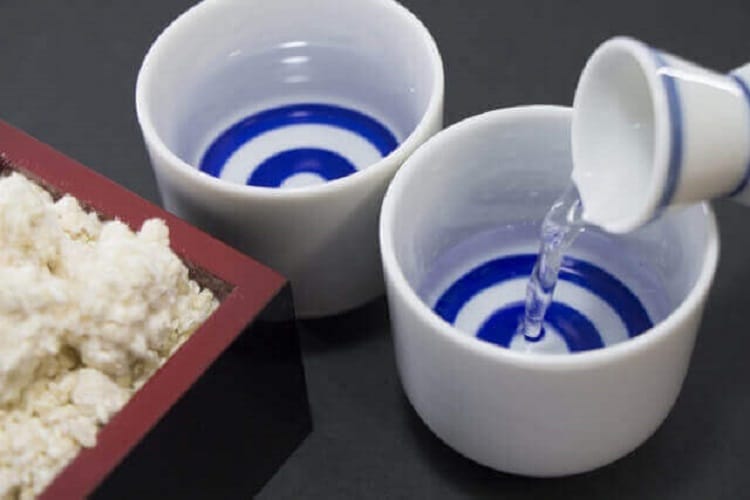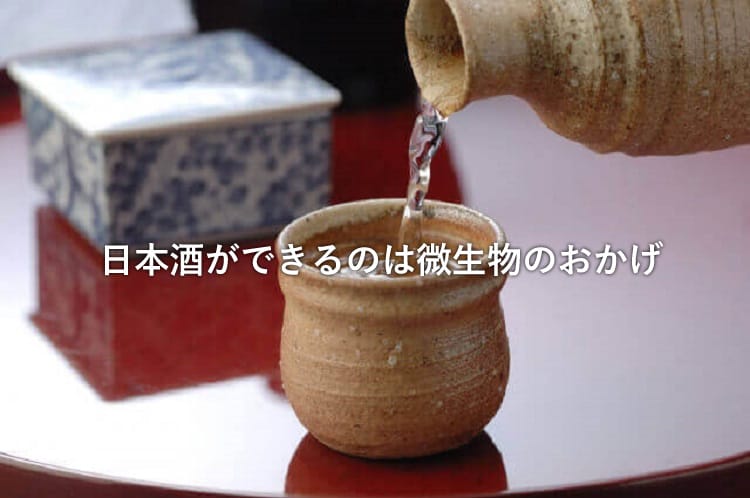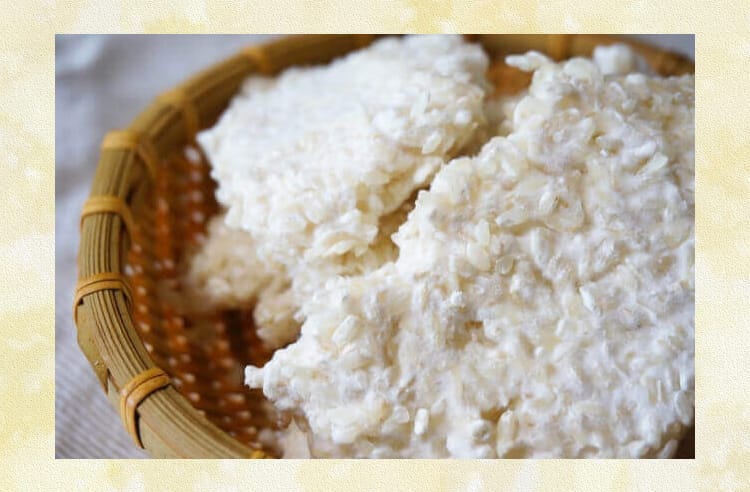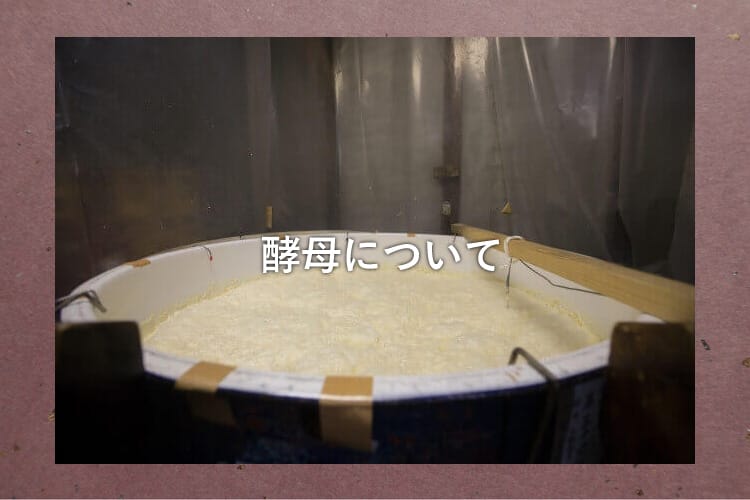
Sake is made thanks to microorganisms

Sake is a drink that cannot be made by human power alone. There are invisible powers of various microorganisms working there.
Here, we introduce microorganisms that are indispensable for sake brewing.
About Aspergillus

One of the most important microorganisms in making sake is"Bacilli"is. Neisseria gonorrhoeae is a type of mold. Some people may feel uncomfortable with "does mold use in drinks?" However, the bonito section is made by repeating the process of “molding” many times. In addition, there are Camembert cheese using white mold and blue cheese using blue mold.
Good mold is a blessing fungus that enriches our diet. By the way,Japan only uses gonorrheais. Neisseria gonorrhoeae can only live in areas with moderate temperature and humidity.The climate of Japan, which is warm and humid, is perfect for habitats.It is. Due to its uniqueness, Neisseria gonorrhoeae became a Japanese in 2006 year"National fungus"Has been certified.
In sake brewing, there are famous words such as “Ichikoji”, “Nikko” and “Sanzo”. This is an old adage that in turn shows the importance of the sake brewing process. The most important thing in brewing"Making", then "Making" (sake mother), and "Making" with moromiIn that sense, koji is considered to have the greatest influence on the quality of sake.
What is cocoon?Sprinkled gonococcal spores on steamed rice and propagatedis. So why do you need straw to make sake? that is,Because rice does not contain the sugar necessary for alcohol fermentationis. So there is a koji moldSaccharification enzyme (amylase)To change the starch of rice into sugar that can be eaten by yeast. This is the most important role of Neisseria gonorrhoeae.
This saccharifying enzyme has a very strong enzymatic activity, and the finished salmon tastes sweet like a chestnut when eaten as it is. Some sake breweries let you eat during the tour, so please try it if you have a chance. In addition, for bacilli,Produces umami ingredients such as vitamins and amino acids, which are nutrients for yeastThere is also the work.
Typical types of Aspergillus
As for the koji mold used for sake brewing,Yellow, white, black, and red kojiAnd so on. Here, we introduce each feature.
[Saccharides]
Most Japanese sake uses yellow koji moldis. Also known as Aspergillus oryzae, it is an ancient Japanese bacillus. The spores at the tip are yellow, yellowish green, or ocher. Among the many koji moldsHas remarkable saccharification powerIs the feature. Japanese sake using jaundiceThere is a tendency to have a fragrant and elegant taste.
Miso, vinegar, mirin and amazake are all made with this koji mold.
[Black koji mold]
It is black koji mold that is mainly used for Awamori. Also called Aspergillus awamori.
The color of the spores is black.Generates a large amount of citric acid, so the acidity becomes stronger. Although the saccharification power is not as good as that of yellow koji, the protein degradability is better than that of koji.
In the past, the use of black koji molds disliked sake breweries because the walls in the brewery would become black. The The leader was cut offFukumitsuya (Ishikawa Prefecture)is. In 2005, the world's first sake brewed pure rice liquor “Fukumasamune Kurobuchi brewing” series was launched and attracted attention.
As sake using black koji mold,Asamai Brewery (Akita Prefecture)However, it was made in collaboration with Oumi Sake Brewery, a shochu brewery in Kagoshima.Amanoto, black rice bowl Junmaihara sake, Tenkuro``, Or Sakai Sake Brewery (Yamaguchi Prefecture)Gotsubashi Ride Black"And so on.
[White Bacteria]
It is mainly used for shochu other than Awamori.Mutants of black koji moldIt was discovered in 1924. Named after the discoverer, Kagoshima Prefecture Tax Supervision Bureau Genichiro Kawauchi,Aspergillus kawachiWas named. Spores are white or light brown. Like black koji mold,Produces large amounts of citric acid and excels in protein degradation.
Since the launch of Shinsei Sake Brewery (Akita Prefecture) “Fax Cat” using white birch fungi, Japanese sake using white birch has been made one after another.Sweet and sour that you can't think of sake has gained new sake fans.
As a sake using Shirakaba bacteria, Hara Sake Brewery (Niigata Prefecture)Honor of Koshi Junmai Shirasagi Circs", Akita Sake (Akita Prefecture)"Karho Junmai Sake white label", Sakai Shuzo (Yamaguchi Prefecture)"Gotohashi Z Five Yellow Shirahige Pure Rice Unfiltered Raw Sake”By Tokuhaga (Hiroshima)Shirakaba Junmai Sake (sea food)"And so on.
[Red yeast]
Also called Monacus Anka. Red yeast is used in the brewing of Chinese and Taiwanese red wine (Anchu) and Okinawa's specialty dish “Tofuyo”.
Red yeastWhen it grows, it becomes beautiful redTherefore, the sake breweries to be used are starting to appear. As sake using red koji mold, Kita Sake Brewery (Fukuoka)Ainohime Rose"Sparkling sake from Tsukinoi Sake Brewery (Ibaraki)"Sakura”Of Yawatagawa Brewery (Hiroshima)Crimson sake"And so on.
BothLiquor with a beautiful pale red color that is particularly popular with womenis. There are many cases that are used for gifts.
The quality of sake changes depending on the breeding condition of Aspergillus
So far, I have written about the types of koji molds, but there are things that have a great influence on the taste of the sake that is produced, in addition to the choice of koji molds. It is a form of gonococcal propagationHaze"is. What is rupture?A phenomenon in which Aspergillus oryzae hyphae breed on steamed rice and become whiteSay. The state that the mycelium covers the surface of the rice and propagates to the inside.Total destruction"
If you use a spear of total destruction,Finished in a dark and firm liquor tends to be.
On the other hand, although the surface of rice is sparsely propagating hyphae,Break through" If you use a spear of spear,Finished with a light and clean tasteIt is often used for Ginjo and Daiginjo sake.
■ About Yeast

In making sake, microorganisms that are important along with koji molds"yeast"is. YeastDecomposes the sugar produced by the cocoon to produce alcoholIt works. In other words, it doesn't become liquor without yeast.
Yeast essential for sake brewing,It is divided into yeast for sake (sake), wine yeast, beer yeast, whiskey yeast.. One characteristic of yeast for sake (sake) is that they can work in harsh environments such as low temperatures and high alcohol.
Yeast is also a factor in determining aroma and taste. In particular,"Ginjo incenseThe role played by yeast is extremely important in creating the scent. When you drink Ginjo sake or Daiginjo sake,Fruit scent like apples, pears, bananas and peachesI think many people have been surprised to do it. It is mysterious why rice, which is a cereal, does not have such a fragrance, but can produce a fruity fragrance. It is the presence of yeast that creates this aroma that cannot be imagined from cooked rice.
The nutrients of yeastSugaris. However, the koji used for Ginjo and Daiginjo sake isThe yeast is always hungry because it is made to slowly convert starch into sugar.. Ginjo sake and Daiginjo sake10 ℃ or lessBecause it is fermented at an extremely low temperature, the stress on the yeast is very large. Yeast in such a harsh environment will cause metabolic changes. And this incident is what makes that fruity scent.
By the way, the ingredients of “fruity scent” are mainly divided into 2 types. one is,"Ethyl caproate" It has an apple-like scent. The other is "Isoamyl acetate" This smells like a banana.
・ Type 1 of yeast
Many of the yeast used in sake brewingJapanese yeastIs called. The Japan Brewing Association distributes it in a brewery in a small glass container called an ampoule.
Yeast is a unicellular organism that exists in nature. In the past, sake breweries made sake using the natural yeast living in their own brewery, the so-called “yeast with brewery”. However, it was very difficult to stably produce good quality sake with brewed yeast. So, the National Brewing Laboratory (currently an independent liquor research institute)Yeast that has been evaluated as excellent at the National Sake Review Conference held in 1911 (Meiji 44) was collected, separated and cultured, and distributed as an association yeast.Did. This is the beginning of “Kyokai Yeast”.
By the way, this measure seems to have thought that we would like to increase the liquor tax by distributing excellent yeast to breweries throughout the country to make stable sake brewing. The liquor tax has been around since the Muromachi period, but at the time of the Meiji 30 period, the liquor tax was the tax revenue of the national tax.3 for about 1Was the top. It is said that the war costs of the Russo-Japanese War were covered with sake. By the way, the share of alcohol tax in 2016 (Heisei 28) fiscal year in national tax revenue is2.2%.
Today's yeasts are numbered in the order they were born,TodayIs called. Below are some typical examples.
・ No. 6: Separated from Shinsei Sake Brewery (Akita Prefecture), known as “Shinsei”, in 1935 (Showa 10). Fermentation power is strong and fragrance is gentle. A light and light taste. Only 6 yeast is used at Shinsei Shuzo. The name of the representative brand “No.6” is derived from this 6 yeast. This is the oldest yeast that is currently distributed.
・ 7 issue: Separated from Miyasaka brewing (Nagano Prefecture), known for "Masumi", in 1946 (Showa 21). With a refined and gorgeous fragrance, it is widely used from ginjo sake to ordinary sake. This is the most commonly used yeast.
・ 9 issue: Separated from the Kumamoto Brewery Research Institute, known for its “karo”, in 1953 (Showa 28). It features very gorgeous ginjo aroma. It is a representative of ginjo sake yeast and was once said to be indispensable for winning a prize at the National New Sake Review Meeting (the majority of the sake exhibited is Daiginjo).
・ 10: Generates firewood over a long period of time at low temperatures. It is characterized by a mild acid and high ginjo aroma.
・ 11: A variant of 7 that produces more malic acid than 7. Even if fermentation of persimmon lasts for a long time, it is cut well and has fewer amino acids. Suitable for dry sake.
・ 14: Separated from Kanazawa sake brewery in 1991. Featuring little acid and high ginjo aroma. It is said to be suitable for sake with a specific name such as a refreshing ginjo sake.
In fact, there are 2 types of yeast for sake. One is that the bubbles are highFoamy yeastIs called. The yeasts introduced so far are all foamy yeasts. Again, the amount of foam is small.Yeast without foam".
Foam-free yeast is a mutation of foamy yeast, and its original nature is the same as foamy yeast. However, because the foam layer during fermentation does not rise,Use bubbles-free yeast because bubbles do not overflow from the tank and are easy to clean and manage, and can be charged up to the last capacity of the tank. Sake breweries are increasing.
6号、7号、9号、10号、14号の泡なし酵母として、601号、701号、901号、1001号、1401号があります。
In response to the growing need for ginjo sake, the development of foam-free yeast that produces more ginjo aroma was promoted. New yeast such as 1601 and 1701 have been distributed one after another, but the most popular in recent years is2006 issue separated in 18 (Heisei 1801) yearis. Many of the Daiginjo sakes that are exhibited at the National New Sake Review are brewed using this 1801 issue. From the 1801 issue2014 issue separated in 26 (Heisei 1901) yearThe rich ginjo incense is also attractive. There is a tendency to produce a wine with a darker taste than 1801.
In addition, one of the rare yeastsRed yeastIs mentioned. as its name suggests,Yeast that produces red pigments in the basketis. It was developed for use in pink nigari sake. It is said that it is finished in a sweet soft type. Sake made from red yeast is the famous Ishii Sake Brewery (Saitama Prefecture) from Toyoake.Hana Akari Peachy pure rice sake"there is.A beautiful soft pink that stimulates a woman's heart and is perfect for cherry-blossom viewing..
Also, Miyashita Brewery (Okayama Prefecture)Okayama white peach yeastIs also attracting attention, such as being introduced on TV.In addition to red yeast, we use 2 yeasts from Okayama White Peach Yeast (patented by Okayama Industrial Technology Center) discovered from white peach trees.This is a very rare liquor.
・ Type 2 of yeast-Yeast developed by local government
I mentioned the Okayama white peach yeast from the Okayama Industrial Technology Center earlier, and in recent years, the development of unique yeasts that are being carried out by test research institutes in each prefecture has become very popular. What sparked that sparkShizuoka Prefectureis. We made our own ginjo yeast, Shizuoka yeast, and it was very highly evaluated at appraisals. Since then, it has been so active that it is said that it is difficult to find places that are not working on development.
These unique yeastsBasically it is used only in each prefecture, but some are registered as "Kyokai yeast" and distributed throughout the country.. Developed by Akita Prefecture,Akita style flower yeast (AK-1) "Is an example.It is distributed as "Kyokai 1501" and is suitable for specific name sake with low acid and high ginjo aroma.It is said that.
・ Yeast type 3-Flower yeast isolated from flowers
One yeast that has been attracting attention in recent years is "flower yeast". Prof. Kubo Nakata, Department of Brewing, Tokyo University of Agriculture,Yeast made by separating yeast that gathers in nectar of flowers.
Nadesico, Begonia, Tulbara, Abelia, Rhododendron, Daily Grass, Carnation, Sunflower, Cosmos, Azalea, Strawberry, Moon Beauty, Cattleya, MarigoldCurrently, 14 flower yeasts are being developed.
・ Type 4 of yeast
In addition, A sake brewery that produces sake using brewed yeast that has been collected and cultured in-houseThere is also. Of particular interest isYamamoto Company (Akita Prefecture).
This brewery is also known for having a unique background of graduating from an American university and working for a music office. For that reason, the sense of the name given to the yeast is also excellent. “Gorgeous Yamamoto Yeast” and “Sexy Yamamoto Yeast” are bold and unique names that you will never forget once you hear them.
・ Yeast for wine
This time, not yeast for sake,More and more sake breweries use wine yeast to make new types of sake..
The yeast for wine is weaker than the yeast for sake, and on the contrary, it suddenly becomes active when the temperature rises, making it difficult to control the sake you want. However, the biggest attraction of wine yeast isCan produce a variety of acidsThat means. Japanese sake made with wine yeastThe balance between sourness and sweetness is exquisite, with a wine-like sweet and sour taste.. Its much alcohol content is12 ~ 13 degrees close to wineSo I think it's easy for people who have just started drinking.
In the past, sake has been disliked as an evil road“Sweetness” is now a major trend in the sake industryis. One of the sake breweries that created that opportunitySenkin (Tochigi Prefecture)is. Kuramoto, who had a different history of being a former sommelier, boldly broke the taboo. Senkin brewed with wine yeastDolce Bouquet (Dolce Bouquet)"Has a strong sweet and sour taste with a solid body, and it is popular as if it were like a German white wine.
Other sakes made using wine yeast include “Edo Kagamiyama Sake Brewery” in Saitama Prefecture.Kagamiyama wine yeast preparation``, Or Tajima Shuzo (Fukui Prefecture), famous for `` Fukuchitose ''PURE RICE WINE"Echigo Tsurugame (Niigata Prefecture)"Echigo Tsurugame wine yeast preparation Junmai Ginjo", Amida (Tochigi Prefecture)"Amida WINECELL Junmai GinjoAnd so on.
About lactic acid bacteria

Finally, we will introduce a little about “lactic acid bacteria”. Lactic acid bacteria are not as prominent as gonococci and yeast, so to speak, they are the leading actors in the shadow.
However, the lactic acid produced by lactic acid bacteriaPrevent the growth of unwanted microorganisms such as various bacteria and wild yeast, and create an environment where yeast for sake is easy to operateIt plays a very important role.
